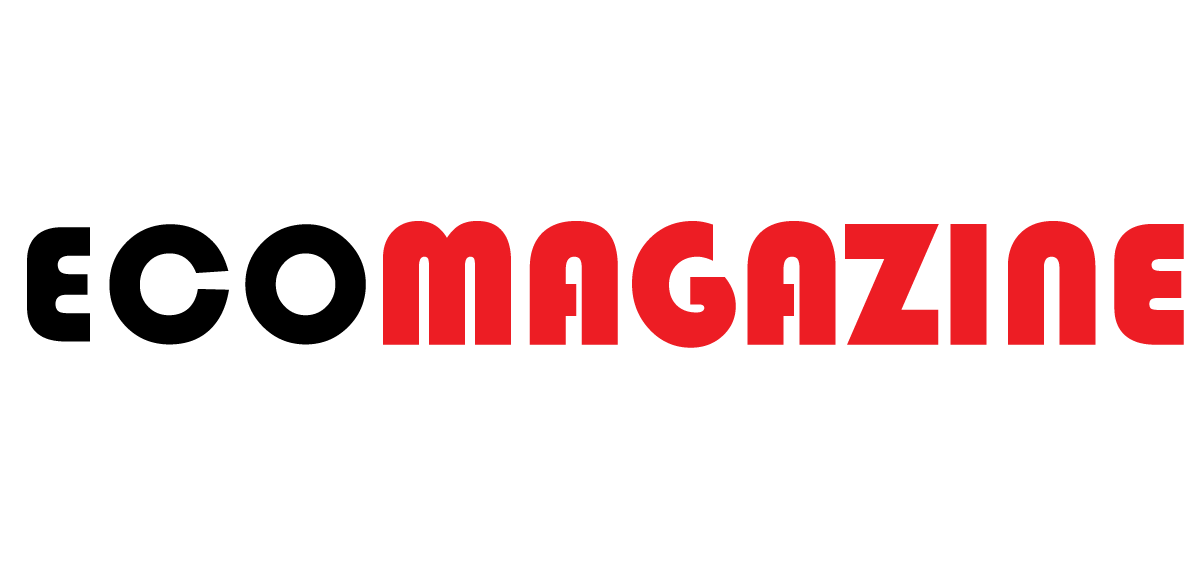Introduction: Cracking the Code to Wellness Market Success
Rapid growth of wellness & nutrition products in the U.S.
The wellness industry in the U.S. isn’t just growing — it’s booming. From supplements and functional foods to fitness and skincare, consumer demand for healthier lifestyles has never been stronger. Shoppers are more aware, more curious, and far more selective about what they buy. This makes the market full of opportunities, but also packed with competition. For a new or even established wellness brand, standing out requires more than just a great product — it requires a smart plan.
Why a strong go-to-market (GTM) plan defines success or failure
Here’s the thing: launching without a clear go-to-market strategy is like trying to run a marathon without knowing the route. Some brands jump in with heavy spending on ads or retail placements, only to realize later they missed key steps like compliance, pricing strategy, or consumer targeting. A proper GTM plan makes sure your brand has direction — from product positioning to choosing the right sales channels. Done right, it saves time, money, and prevents costly mistakes.
Role of expert partners like TruLife Distribution in guiding brands
If you’re thinking about bringing your wellness product into the U.S. market, you’ll quickly see how complex the journey can be. Regulations, logistics, retail access, and consumer trust all come into play. This is where expert partners such as TruLife Distribution make a difference. With years of experience in the health and nutrition space, they help brands cut through the noise and build strategies that actually work. And as we’ll explore in this article, having the right partner alongside strong wellness product go-to-market strategies can turn a risky launch into a long-term success story.
The Unique Challenges of Wellness Product Launches
Strict regulations and compliance hurdles
If you’ve ever thought, “I’ll just create a supplement and start selling,” here’s the reality check: the wellness industry doesn’t work that way. In the U.S., every product must meet strict FDA standards for labeling, packaging, and safety. Even a small slip—like forgetting to include one ingredient on the label—can lead to fines, product recalls, or blocked entry into the market. Think of it as building a house: if the foundation (compliance) isn’t strong, the whole structure is at risk. That’s why regulatory planning needs to start before launch, not after.
Overcrowded markets with high competition
Walk into any health store or browse Amazon, and you’ll instantly see the challenge—shelves full of protein powders, vitamins, and “superfood” blends all claiming to be the best. This overcrowding makes it hard for new brands to grab attention. Without a clear go-to-market strategy, your product risks becoming “just another option” in a sea of choices. Here’s the thing: it’s not always the product with the most features that wins, but the one that tells its story better and reaches the right audience at the right time.
Consumer demand for transparency and trust
Today’s wellness shoppers don’t just buy products—they research them, read reviews, and expect full transparency. If your brand can’t show authenticity or provide proof behind health claims, consumers will move on quickly. Imagine buying a supplement that says “all-natural” but doesn’t share sourcing or testing details—you’d feel hesitant, right? The same goes for your customers. Earning trust means being open about ingredients, safety checks, and the values your brand stands for. In short, trust is no longer optional; it’s the currency of the wellness market.
What Makes a Go-to-Market Strategy Different in Wellness?
Customer health & safety considerations
When it comes to wellness products, you’re not just selling a drink, capsule, or powder—you’re asking people to put something into their bodies. That raises the stakes immediately. Unlike fashion or tech products where mistakes can be patched up, a single misstep in supplements or nutrition can impact health. That’s why safety checks, certifications, and transparency play such a big role in any go-to-market plan. If you’re thinking about launching, remember: your GTM strategy isn’t just about reaching customers—it’s about protecting them first.
Lifestyle-driven brand positioning
Wellness shoppers don’t just buy for function; they buy for identity. For example, someone who chooses a plant-based protein shake isn’t just looking for protein—they’re showing commitment to a lifestyle choice. This is where your GTM plan has to go beyond product specs and tap into emotions, values, and culture. Instead of saying “this supplement has 10 vitamins,” it’s far more powerful to frame it as “this helps busy parents stay energized through their day.” The difference is subtle but game-changing.
Balancing science-backed claims with emotional appeal
Here’s the thing: wellness products live in a tricky space. On one hand, consumers want proof—clinical studies, certifications, and data. On the other hand, they connect with stories—how a product makes them feel or how it fits into their daily life. A strong go-to-market strategy blends both. Think of it like a bridge: science builds credibility while storytelling builds connection. Brands that can balance these two sides are the ones that not only get noticed but also build long-term trust.
Wellness Product Go-to-Market Strategies
Core components: research, compliance, branding, distribution
Launching a wellness product is like building a strong foundation—you can’t afford weak bricks. It begins with research to understand market gaps, followed by compliance checks to stay FDA-ready. Then comes branding, where you craft a story that resonates with customers, and finally distribution, which ensures your product reaches the right shelves and online channels. Many brands struggle to align these steps, but with guidance from partners like TruLife Distribution, the process becomes smoother, faster, and less risky.
Why integration across channels matters
Today’s shoppers move between Instagram, Amazon, and retail aisles without thinking twice. That means your story must stay consistent everywhere. A mismatch—like claiming “sustainable” online but showing non-eco packaging in-store—can cost you trust instantly. Companies that work with experts such as TruLife Distribution often find it easier to keep messaging unified, because the brand-building, marketing, and distribution pieces are already connected under one strategy.
Real-world example of a phased GTM approach
Imagine a wellness brand preparing to launch a collagen drink. Instead of going nationwide overnight, they first test the waters online, gather feedback, refine packaging, and then expand into retail chains. This phased rollout lowers risk and provides real data before scaling. In fact, this is the kind of wellness product go-to-market strategy that TruLife Distribution helps brands execute—measured, data-driven steps that turn uncertainty into confidence.
Building Market Readiness Before Launch
Compliance & Regulatory Foundations
Before a wellness product ever reaches the shelves, compliance has to come first. FDA guidelines, correct labeling, proper packaging, and safety checks aren’t optional—they’re non-negotiable. Even small mistakes, like missing a single line on a supplement fact panel, can lead to product recalls or delayed launches. That’s why brands that take compliance seriously from the start save themselves from headaches later. Partners like TruLife Distribution specialize in guiding wellness companies through this maze, ensuring every product is launch-ready and aligned with U.S. market rules.
Product Testing & Quality Assurance
Here’s the thing: consumers today don’t just want promises, they want proof. Third-party testing, certifications, and quality seals give them the confidence that a wellness product is safe and effective. Without this validation, even a great product risks being ignored. Think about it—would you pick a supplement without proof of testing when five other options on the shelf proudly display certifications? Brands that work with experts such as TruLife Distribution often gain an edge here, because testing and validation are built into their go-to-market approach.
Market Research & Consumer Insights
Market readiness isn’t just about compliance—it’s also about knowing your audience inside out. Who’s your ideal customer? What wellness trends are driving their choices? Are they focused on immunity, weight management, or plant-based lifestyles? Market research answers these questions and shapes your messaging. For example, launching a collagen product without understanding whether your target market prefers marine or bovine sourcing could mean missing out on sales. TruLife Distribution helps brands dig into these insights so they can position their products smartly, not blindly, in an increasingly competitive space.
Strategic Channels for Distribution Success
Direct-to-Consumer (DTC) & E-Commerce
Launching online first has become one of the smartest moves for wellness brands. Why? Because consumers love the convenience of ordering directly and getting products delivered to their doorsteps. E-commerce also gives brands full control over storytelling, pricing, and customer experience. For example, a new supplement company can test demand through its website or Amazon before spending big on retail distribution. With the right approach, brands can build loyal communities online before they ever hit store shelves. TruLife Distribution often helps wellness companies design these online-first rollouts so they can enter the U.S. market with less risk and more insight.
Retail & Health Store Partnerships
While online is powerful, retail partnerships still matter—especially in wellness. Being on the shelves of mainstream chains or boutique health stores builds credibility fast. Many customers still prefer to pick up vitamins, supplements, or nutrition products in-person, where they can read labels and compare options. The challenge, of course, is breaking into these networks, as shelf space is limited and competition is fierce. That’s where experts like TruLife Distribution bring value: with established retail connections, they help brands secure placements that would otherwise be difficult to achieve.
Community & Influencer Advocacy
Here’s the thing: in wellness, trust spreads faster when it comes from real people, not just ads. That’s why community engagement and influencer advocacy have become so important. Whether it’s fitness trainers, nutritionists, or everyday customers sharing results, authentic voices build credibility in ways marketing alone can’t. For instance, a small wellness brand might see faster growth when recommended by a respected yoga instructor than through a billboard ad. By blending community-building with distribution, companies can amplify their reach. TruLife Distribution often encourages brands to pair traditional distribution strategies with influencer and community advocacy so they create a well-rounded go-to-market plan.
How TruLife Distribution Supports GTM Success
Full-service support: compliance, warehousing, retail access
Launching a wellness product in the U.S. market isn’t just about having a great formula—it’s about making sure every step of the process is covered. From FDA compliance and labeling to warehousing and retail placement, each stage plays a role in whether your product succeeds or stalls. TruLife Distribution offers full-service support that takes brands from “ready to launch” to “ready to grow.” By handling the technical and logistical details, they allow founders to focus on building their vision while ensuring nothing slips through the cracks.
Brand-building expertise for U.S. market entry
Here’s the thing: the U.S. wellness market is crowded, and simply showing up isn’t enough. Brands need a clear strategy to position themselves in a way that grabs attention and builds trust. With years of experience in health and nutrition distribution, TruLife Distribution helps brands craft a story that resonates with American consumers. Whether it’s refining messaging, targeting the right audience, or selecting the best channels, their expertise turns potential into performance.
Case snapshot: how TruLife Distribution helped a supplement brand scale faster
Imagine a supplement company with a high-quality product but no idea how to break into the U.S. market. Without the right partner, they risked delays, compliance issues, and wasted money on trial-and-error strategies. By working with TruLife Distribution, they streamlined compliance, secured retail introductions, and optimized their go-to-market plan. Within months, the brand moved from being unknown to having a strong retail presence and a growing consumer base. This is the kind of success that shows how the right GTM support can completely change a brand’s trajectory.
Best Practices for Wellness GTM Strategies
Start compliance early, not last-minute
When it comes to wellness products, compliance is not something you can “fix later.” FDA regulations, labeling rules, and packaging standards all need to be in place before your product even enters the market. If you wait until the last minute, you risk delays, fines, or worse—having to pull back your launch completely. That’s why smart brands partner with experts like TruLife Distribution, who make compliance a priority from day one and guide you through every detail so nothing slips through.
Use phased rollouts with pilot markets
Here’s the thing: going nationwide right from the start might sound exciting, but it can also be risky. Many successful wellness brands begin with a phased rollout—testing their product in one region or through e-commerce first. This allows them to gather feedback, adjust their marketing, and fine-tune their distribution strategy before scaling. It’s like test-driving a car before a long road trip—you’d rather catch issues early than break down halfway. TruLife Distribution often supports phased launches, helping brands minimize risk and maximize learning.
Leverage data, customer feedback, and demand forecasting
In the wellness space, guessing doesn’t cut it anymore. You need hard data and real feedback to know what’s working. For example, if customers love your product but complain about the packaging, that’s an opportunity to improve before expanding. Demand forecasting tools can also help you avoid stockouts or overproduction. Companies that integrate data into their go-to-market strategies make smarter decisions and build stronger relationships with their audience.
Build sustainability and transparency into brand storytelling
Today’s consumers want more than just a good product—they want a brand that aligns with their values. Transparency about sourcing, eco-friendly packaging, and sustainable business practices aren’t “extras” anymore; they’re expectations. For example, a wellness brand that openly shares how ingredients are sourced and why packaging is recyclable builds instant credibility. With TruLife Distribution’s market insight, brands can shape their storytelling in a way that connects with today’s conscious consumers and sets them apart in a crowded marketplace.
Future Trends in Wellness Go-to-Market Strategies
AI-driven consumer personalization
The future of wellness is personal. Instead of “one-size-fits-all” marketing, brands are now leaning on AI to understand individual preferences. Imagine a wellness app suggesting supplements or fitness products based on your sleep, diet, and activity levels—that’s where the market is heading. By tapping into AI tools, brands can deliver more tailored messages and product recommendations that feel less like ads and more like real advice. This not only boosts sales but also deepens trust with consumers who want to feel understood.
Growth of subscription & direct-fulfillment models
Here’s the thing: convenience sells. That’s why subscription boxes and direct-to-door delivery are growing so fast in the wellness space. People love the idea of getting their vitamins, protein powders, or skincare essentials delivered monthly without having to reorder. Plus, it helps brands secure steady revenue and long-term customer loyalty. If you’re planning a launch, thinking about a subscription-friendly setup could give you a competitive edge. Companies like TruLife Distribution already help brands explore these models for smoother U.S. market entry.
Eco-conscious packaging as a brand differentiator
Consumers today don’t just ask “what’s inside the bottle?”—they also care about what’s outside it. Eco-friendly packaging is becoming a powerful selling point. Whether it’s compostable containers, refill systems, or reduced plastic usage, sustainable packaging shows responsibility and resonates with eco-conscious buyers. For example, a wellness brand that highlights its recyclable packaging on social media can instantly attract attention and loyalty from green-minded shoppers. It’s not just good for the planet; it’s smart branding for long-term growth.
Conclusion: Setting Your Wellness Brand Up for Growth
Recap of GTM essentials
If there’s one thing to take away, it’s that a successful launch in the wellness industry doesn’t happen by chance. From compliance and product testing to market research and channel selection, every step in your wellness product go-to-market strategies has to be carefully planned. Skipping even one of these areas can slow you down or put your brand at risk.
Why the right partner changes the outcome
Here’s the thing—having a strong plan is important, but having the right partner to guide you makes all the difference. A trusted distribution and strategy partner can help you avoid common mistakes, reduce delays, and connect you with the right retail and digital channels. Instead of figuring it all out on your own, you’ll have expert guidance that speeds up your path to growth.
Final note: TruLife Distribution as a trusted growth ally
If you’re serious about scaling in the U.S. wellness market, you’ll need more than a good idea—you’ll need execution. TruLife Distribution has built a reputation for helping wellness brands not just enter the market but thrive in it. By combining compliance expertise, retail access, and brand-building support, they make expansion smoother and more reliable. For any brand aiming for long-term success, choosing the right partner is the smartest step you can take.
FAQs
Why are wellness product go-to-market strategies important?
Wellness brands face strict regulations, high competition, and fast-changing consumer demands. A solid go-to-market strategy ensures compliance, builds trust, and helps products gain visibility in the crowded U.S. market.
How does TruLife Distribution help brands with go-to-market success?
TruLife Distribution provides end-to-end support, from regulatory compliance and packaging guidance to retail partnerships and digital marketing. Their expertise helps brands scale faster and avoid costly launch mistakes.
What are the latest trends in wellness go-to-market strategies?
Trends include AI-driven personalization, subscription models, eco-conscious packaging, and direct-to-consumer fulfillment. Brands that adopt these approaches early often see stronger customer loyalty and faster growth.


